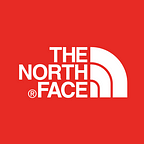Back to Our Roots
The Original Day Pack
At The North Face, we place a lot of emphasis squarely on the future with our constant drive to create the most progressive technical gear for athletes who push their limits in extreme environments. But when you’ve been doing it as long as we have, it’s important to take a look back from time to time and remember the footsteps that led to the present. With The North Face celebrating its 50th birthday this year, we felt it was the perfect time to do exactly that.
A key step along that path happened very early on. The North Face got its start in 1966 as a retail store in San Francisco’s historic North Beach neighborhood, importing high end European climbing and hiking gear to supply the pioneering dirtbags who were hitchhiking in droves out to climb Yosemite’s majestic granite walls. Climbing was developing so rapidly at the time that gear companies were struggling to keep pace and by 1968 The North Face decided it was time to do something about it. The company set up shop across the San Francisco Bay in Berkeley and started producing a line of goods for the discerning climber, laying the foundation for the next five decades.
One of the earliest product offerings was the original Day Pack, a lightweight pack for shorter hiking and climbing forays. Setting the pack apart from its boxy European rucksack contemporaries was the teardrop shape, tapering from top to bottom to keep the user’s elbows from bashing into it while hiking and prevent it from snagging on rocks while climbing. Two compartments helped spread the load and shoulder straps made with felted wool kept things comfortable. Apart from a simple “The North Face” patch, all that adorned the outside was a loop and lash tab for an ice ax.
Compared with modern packs built for alpine climbing, the original Day Pack looks more suited for carrying textbooks across the quad than lugging food and rope out to the crag, but in its day it was on the cutting edge of climbing equipment and helped start The North Face on a path of innovation that hasn’t slowed in the following 50 years.
Given the hallowed status that first Day Pack holds in the pantheon of TNF products, it was a no-brainer to bring it back into production to celebrate our 50th anniversary. The teardrop shape has become an iconic silhouette over the years, and the minimalist, no-nonsense construction is as practical today as it was in ‘68.
Not only was it important to stay as true as possible to the design of the original bag, it was also crucial that it be manufactured in the same spirit. TNF has long since outgrown that first small workshop in Berkeley, but we were able to find a partner in Chicago that embodies that same spirit of craftsmanship and homegrown ingenuity. As a family run business that got its start making newspaper delivery bags before the First World War, these guys know a thing or two about making sturdy packs.
Working with them, we then began tapping the extensive network of domestic suppliers in The North Face family to source the materials, from heavyweight waxed canvas made in Georgia to webbing and felted wool made elsewhere in Chicago. In fact, the vast majority of the bag’s components come from various manufacturers in Chicago. Looking for details on the original shoulder strap hardware, TNF product developer Greg Dailey found the name of the supplier on a forgotten document tucked away in the warranty department and was pleasantly surprised to find that they are still churning out buckles today: Sometimes they do make ’em like they used to. (And yes, they’re based in Chicago, too.)
For the piece de resistance, the leather-reinforced bottom and trim, we partnered with another Chicago institution: Horween Tannery. Horween is widely regarded as the best leather tannery in the US, not only providing high end leather to the country’s best shoemakers and other craftspeople, but also to the NFL and NBA for use in game balls. Horween has been a family run business for over five generations and it definitely shows in the quality of their product. They’re also a stone’s throw from the workshop where the Day Packs were made, keeping things hyperlocal.
Through it all, the guiding principle was to create an heirloom-quality piece that can be cherished for the next 50 years. There are plenty of stories where a TNF staffer has seen someone with a vintage pack in the wild and flagged them down to ask if they can buy it for the company archive. The answer is almost always, “No thanks, I have too many good memories with this bag.”
Hopefully this bag will be no different.
Click to learn more about the Original Day Pack and the rest of the New Originals collection.
